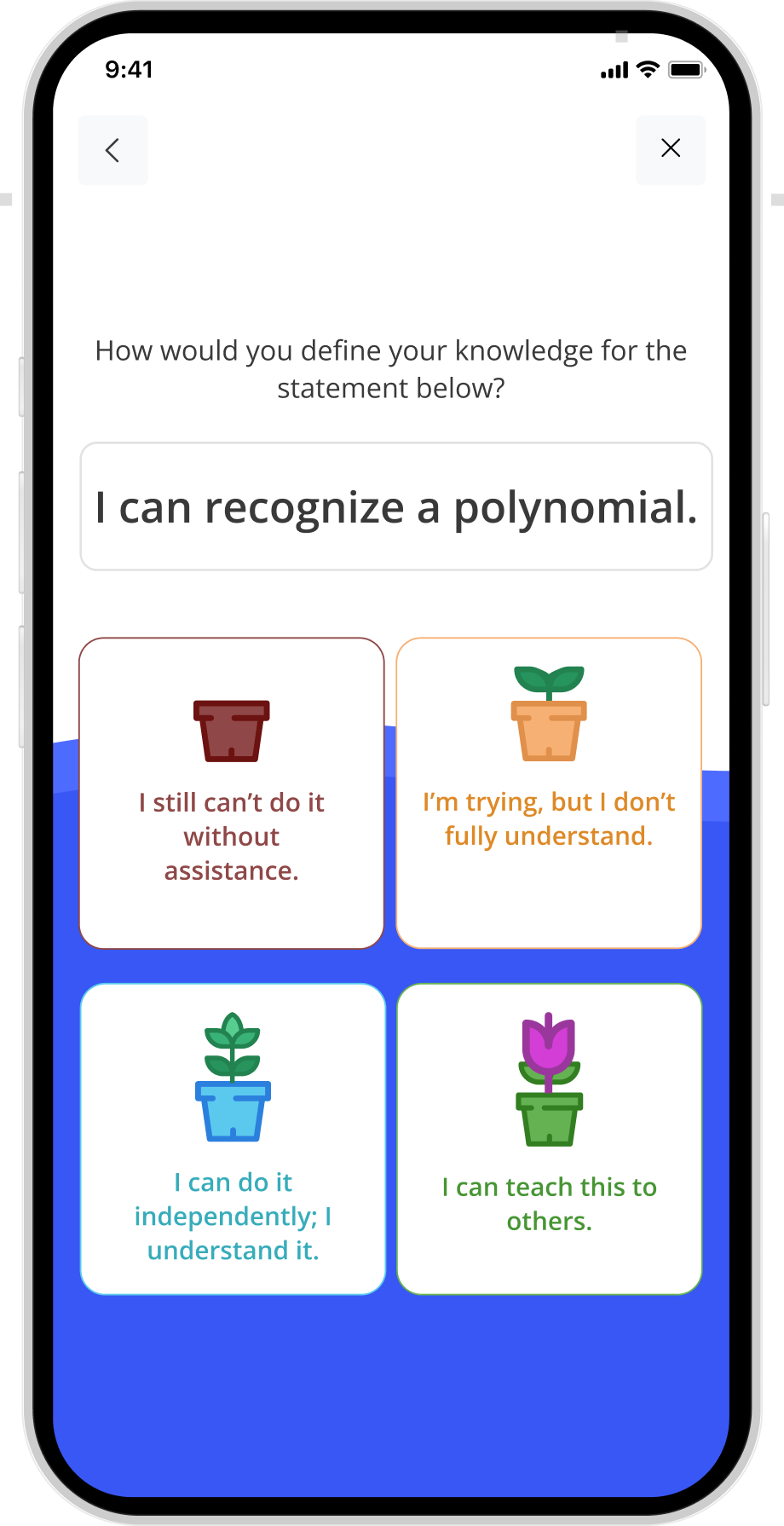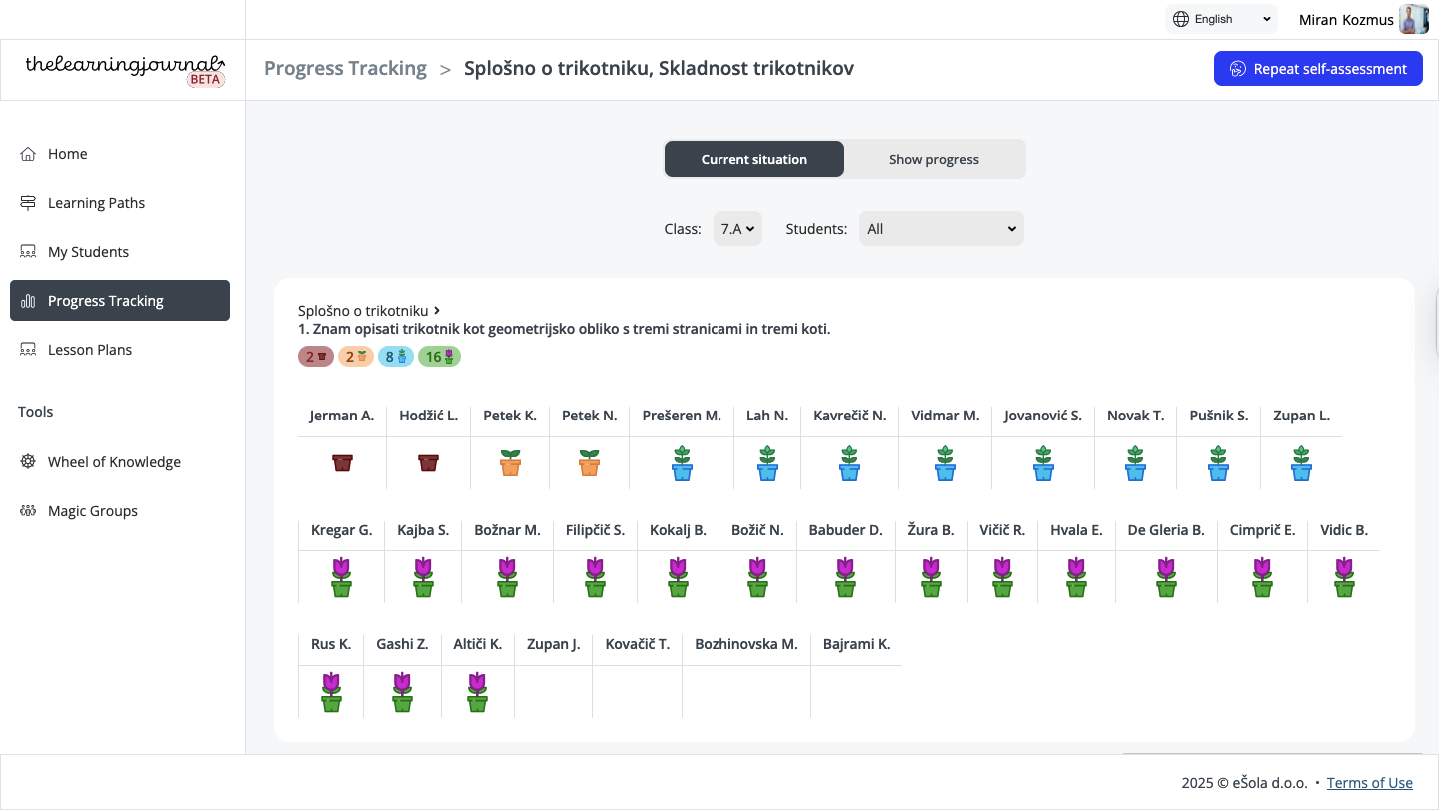From chaos to classrooms
-
From chaos to classrooms -
From undefined vision to a MVP rollout
Project at a glance
Client/Product: eSchool (eAssistant)
My role: End-to-end product designer (Research, UX,UI, Testing)
Team: Me as the main designer + developers and product owner
Duration: 2 years (concept → launch)
Tools: Figma, Figjam, 1ka, Canva, Confluence, Jira
A story intro
In 2023, I traveled to London with a group of Slovenian teachers. These weren’t just educators — they were quiet revolutionaries. They practiced formative teaching, a method built around growth, not grades. Around reflection, not just repetition.
One of them, Janja, stood out. A Slovenian language teacher with a sharp mind and glowing eyes. In every school we visited, she leaned forward, hungry to bring those ideas home. She talked about goals, student motivation, and the deep “why” behind learning.
Two years later, I saw her again — on a video call.
She looked… different.
“I’m thinking about leaving,” she said.
“I just don’t know if I’m making a difference anymore.”
That stayed with me. And it became the emotional core of this project.
The reality of the school system today
In Slovenia, and in many places, school doesn’t feel like a place of growth.
For students: school often feels meaningless. Most cram the night before tests, flipping through notes. They don’t talk about curiosity. They don’t talk about joy. They talk about “getting through.”
For teachers: school is endless work. Lessons to prepare, tests to grade, documents to file, parents to meet. Many told me they already give everything they have — and still feel like it’s not enough.
This is the paradox:
Students feel teachers don’t care, so they disengage. Teachers feel students don’t care, so they burn out. Both sides lose.
Framing the challenge
I dug through every artifact I could find: old prototypes, conference decks, Confluence pages, even recordings of past meetings. Patterns began to emerge: ideas repeated, questions unanswered.
From there, I reframed the vision into two human-centered problem statements:
Students: How might we make learning feel meaningful and motivating, not just about passing the next test?
Teachers: How might we give them tools that support formative teaching, without adding to their burden?
That clarity gave us something we could design for.
Exploring & Prototyping
When no one knew where to start, I started by making. Every day, I sketched, iterated, and sent new flows to the team to provoke feedback.
Early prototypes showed ways for students to reflect on what they knew.
Teacher prototypes focused on visualizing class progress and making preparation easier.
I explored multiple directions in parallel to see where adoption potential was strongest.
Constraints that shaped design:
Scope: We couldn’t “boil the ocean.” Every new feature meant delaying release, so I focused on the minimum set that could prove value.
Research & Listening
To avoid designing in a vacuum, I paired prototyping with continuous research.
I interviewed students, structuring conversations with The Mom Test to avoid leading questions.
I ran usability sessions with clickable prototypes to catch raw, authentic reactions.
I shadowed teachers, observed their routines, and had candid conversations about their workload.
Limits I had in mind:
Technology access: Slovenian primary schools ban phones in class. Could we still expect daily student reflections?
Time: Teachers already spend evenings and weekends preparing — any added step was a dealbreaker.
What I uncovered:
Students crave shortcuts — but light reflection and progress tracking sparked curiosity.
Teachers desperately need time savings. Formative methods inspire them, but most can’t afford the overhead.
Shaping the MVP
Based on research and constraints, I also took part in defining what our first release should include.
Suggested strategies to balance student engagement with teacher time savings.
Scoped down the initial product to a realistic MVP teachers could actually adopt.
Prioritized features that made learning progress visible, while keeping setup effort minimal.
From vision to MVP
The scope of our first MVP included:
Student app: onboarding, reflections, progress visualization.
Teacher app: dashboard, library, editing tools, reflection results.
We piloted it with ~1,000 teachers.
What we heard:
Students responded positively to seeing growth.
Teachers valued insights. They expressed interest in a larger library, faster setup.
A small but passionate group of teachers became loyal adopters — and advocates.
Final results
Learning paths
Each subject is broken down into the smallest possible learning goals.
Instead of a vague "unit," we now had dozens of small, concrete checkpoints.
For example:
Subject: Math
Unit: Polynomials
Goals:
“I can recognize a polynomial.” → “I can simplify it.” → “I can apply it in context.”
Students can use the learning path as a checklist, and actually see their progress.
For students
Reflection using a growth scale with supportive phrasing:
🐣 “I still can’t do it without assistance.”🌱 “I’m trying, but I don’t fully understand.”
🌿 I can do it independently; I understand it.
🌳 “I can teach this to others.”
Clear, visible progress through time and knowledge.
Quizzes to further assess knowledge and visualize progress
For teachers
Teachers instantly see:
Which students are struggling or progressing fast
Which goals are still unclear across the class
Emotional or motivational dips in learning (via repeated low scores)
They can:
Send reflection forms at any point
Repeat the same reflection over time to track growth
Use filters and alerts to group students into needs-based cohorts
🧠 And they don’t have to create the learning paths — we do that for them.
The Impact
This project didn’t “change the whole school system” overnight. But it did what previous attempts hadn’t: it shipped. It reached classrooms. It gave teachers and students something real to hold onto, not just a prototype.
MVP launched with 1,000 teachers.
Built early loyal adopters who kept using and promoting it.
Translated a broad vision into a concrete, testable product direction.
Come and say hello 🌸
curious about my work, or just want to share a song recommendation 🎧?
either way, my inbox is always open 💌






